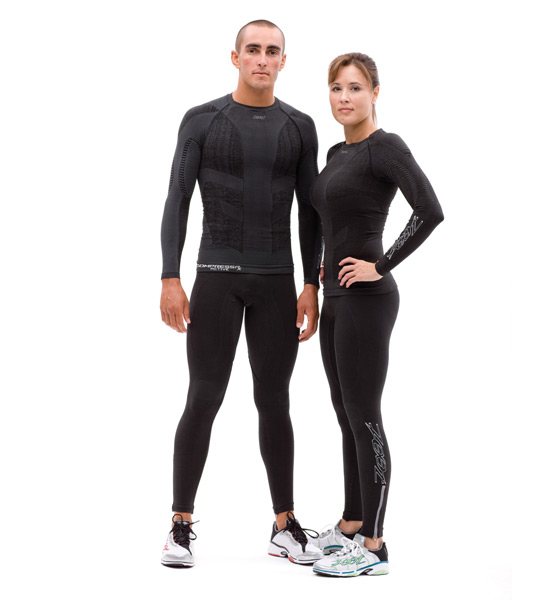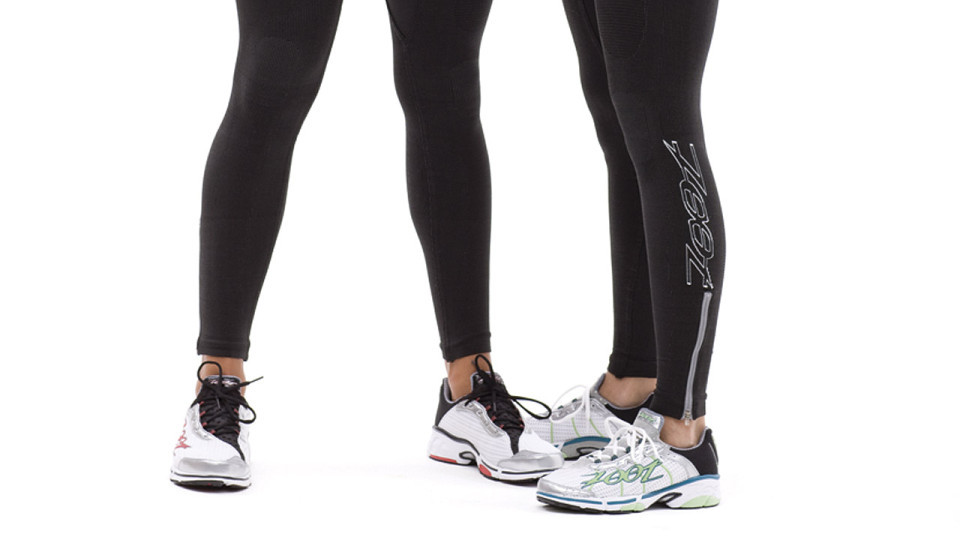It is no secret that the use of compression wear has gained in popularity – at least within the Singapore context. But the question we’d like to pose is do we really know how to get the most of it? The truth is yes, there are benefits to that “tight wrap”; you should also know that there are shortfalls. Thankfully, we’ve managed to engage the think tank of two experts in this area: Marc Pereira (Product Trainer, Running Lab) and Shawn O’Shea (Director of Apparel, Zoot Sports). The following are edited excerpts that would hopefully help clear the air on some misconceptions.
Take us through the ‘mmHg’ rating system.
‘mmHg’ is the medical acronym that stands for millimeters of mercury which is the international standard unit of measurement used to classify the amount of pressure that is provided by compression garments. Compression garments can range between 8 mmHg to 60 mmHg; garments that read more than 30 mmHg require a doctor’s prescription.
Not all garment manufacturers will speak in mmHg terms as it can be confusing for consumers or because they do not want to use it for marketing purposes.
Compression wear worn during a race. How effective is it in reducing muscle fatigue?
According to Aaron Hersh, Tech Editor of Triathlete magazine, compression wear aids in the following:
- Improved Blood Circulation – Directs blood flow from capillaries to blood vessels, enhancing oxygen exchange between the blood and the muscles; this exchange primes the body for maximum efficiency and endurance.
- Better Muscle Alignment – Hugs the muscles where it counts, aligning the musculoskeletal system and allowing for precise movements.
- Reduction in Lactic Acid – Lactic acid is the major source of muscle fatigue that causes cramp and soreness.
- Increased Oxygen Delivery to Muscles – Strategic compression prevents blood pooling and enables better circulation which in turn translates to better oxygenation of muscles.
- Better posture – Your posture is enhanced when your muscles are cinched into place; when you use the tops. With good posture comes better stability.
 Courtesy of Zoot
Courtesy of ZootIn fact, at the recent U.S. marathon Olympic trials, the first male and female finishers were wearing compression socks.
Compression wear worn after a race. How does it assist with recovery?
Medical professionals have long recommended compression for patients looking to improve blood circulation and overall leg health. Athletes experience less inflammation and muscle soreness which leads to speedier recovery.
Who should use compression wear and who shouldn’t?
Athletes are recommended to wear compression; whether is it during/after a workout or a long flight.
There are medical conditions in which wearing compression is not recommended:
- Ischemia (advance arterial disease) of the legs
- Uncontrolled congestive heart failure
- Untreated septic phlebitis (inflammation of a vein resulting from bacterial infection) of the leg
- Phlegmasia cerulea dolens (blockage caused by a blood clot in major and collateral veins)
Caution has to be exercised with the following:
- Skin infections
- Weeping dermatitis (blisters that rupture and exude serum)
- Incompatibility to fabric of garment
- Impaired sensitivity of the limb
- Immobility (confinement to bed)
What are some basic fundamentals athletes should note while selecting compression wear?
Fitting should be the number one concern. Most brands on the market use a height and weight chart. However, if a runner is 1.8 metres tall and weighs 80 kilograms but his brother who has the same dimensions is a body builder, the fittings will vary.
Detrimental effects of compression wear if not used properly?
We never recommend wearing a calf guard for recovery as it will pool blood in the foot and hurt recovery. You should wear a compression sock or recovery tight to effectively get blood back to the heart.





